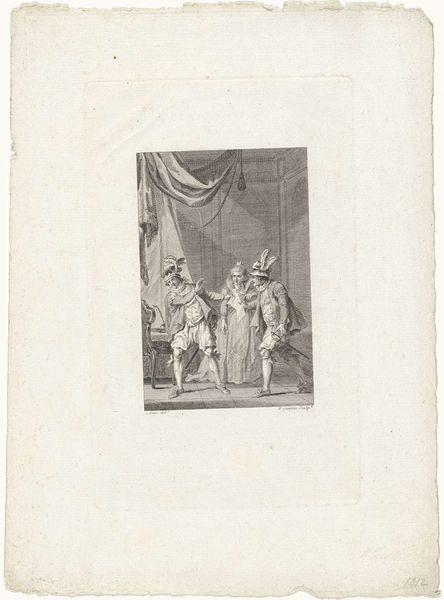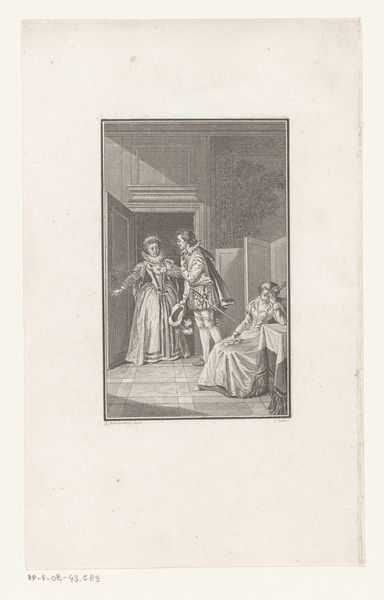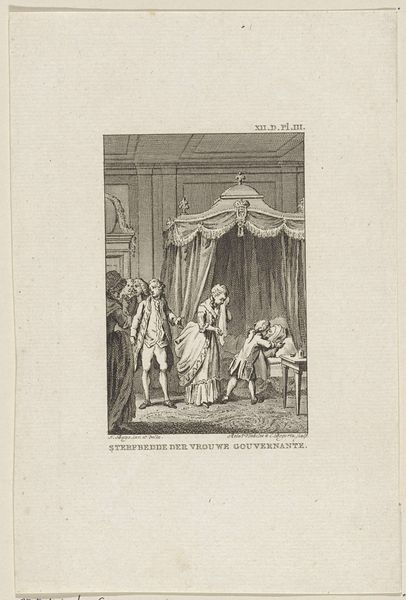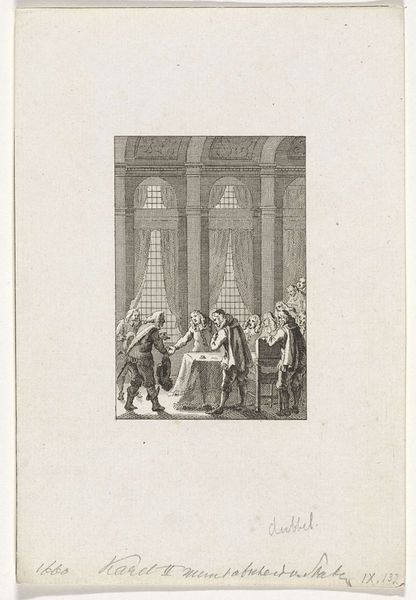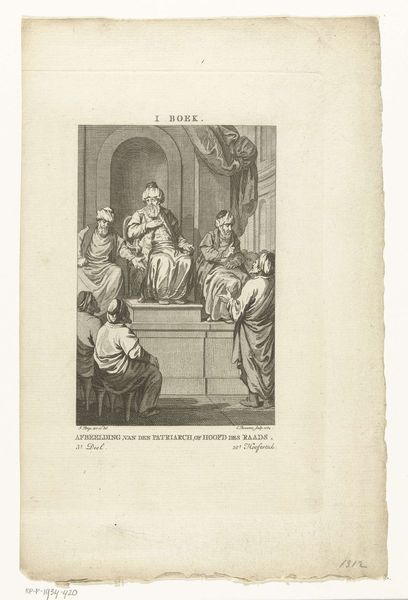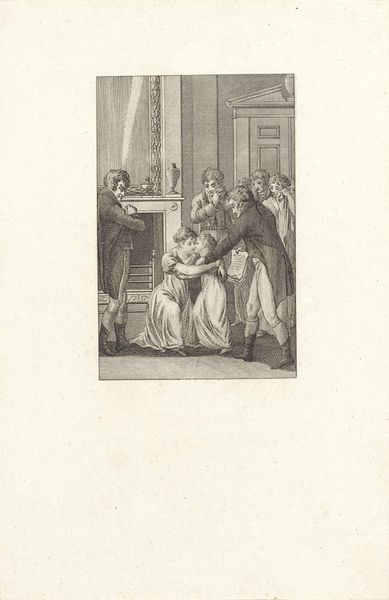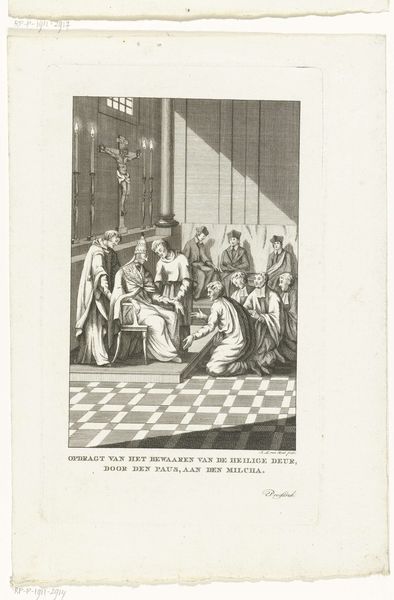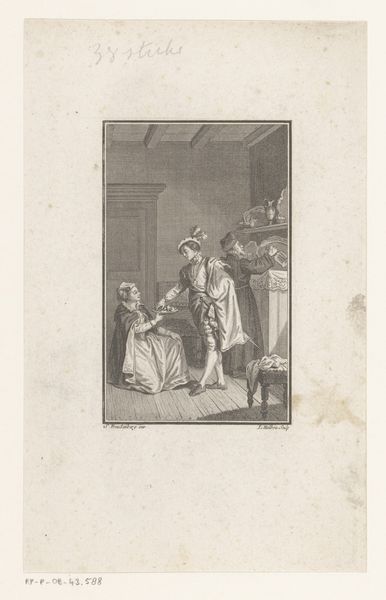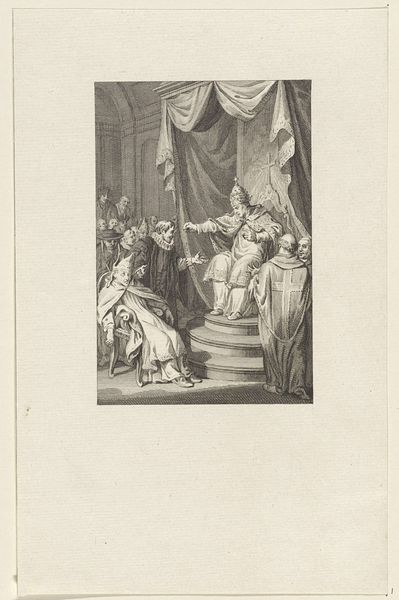
print, engraving
#
narrative-art
#
dutch-golden-age
# print
#
old engraving style
#
genre-painting
#
history-painting
#
engraving
Dimensions: height 170 mm, width 115 mm
Copyright: Rijks Museum: Open Domain
Editor: Here we have "Hugo de Groot stapt in de boekenkist, 1621" by Walraad Nieuwhoff, a print dating from between 1815 and 1837. I'm immediately drawn to the use of light and shadow in creating depth. It feels staged, like a theatrical scene. What are your thoughts on this piece? Curator: Indeed. Note how the artist has deployed engraving techniques to meticulously define each plane and form. Observe the almost sculptural rendering of the figures through carefully controlled lines. Consider also the tension between the narrative content and the formal arrangement. Do you see how the composition leads the eye? Editor: I do see how the figures are arranged – they guide our gaze right to Hugo. But is it just about the technical skill? Doesn't the subject matter – a historical escape – play a role in its appeal? Curator: Certainly, the subject holds narrative weight. However, let us analyze the contrasting textures achieved solely through the manipulation of lines: the smooth surface of the bust versus the intricate folds of the clothing. Dissecting the lines and forms reveals a carefully constructed visual experience, almost independent of the historical narrative. It becomes an exercise in contrasts and pattern. What does this formal tension evoke in you? Editor: It does create a compelling dichotomy. It’s both a story and a very deliberate arrangement of forms and textures. It makes you question which element is more important. I suppose the real beauty is the combination of the two. Curator: Precisely. It's in understanding the formal elements, the composition and texture that the layers of meaning start to unravel.
Comments
No comments
Be the first to comment and join the conversation on the ultimate creative platform.

